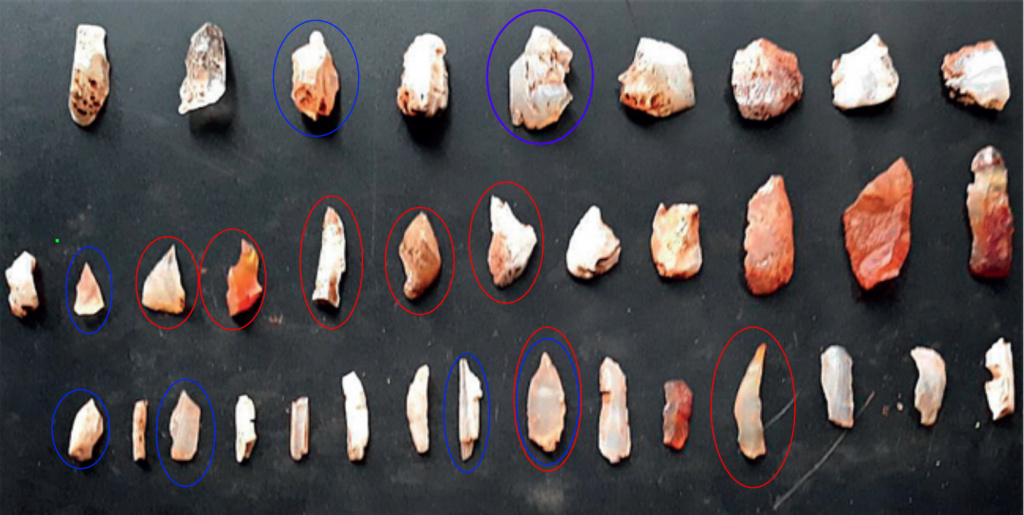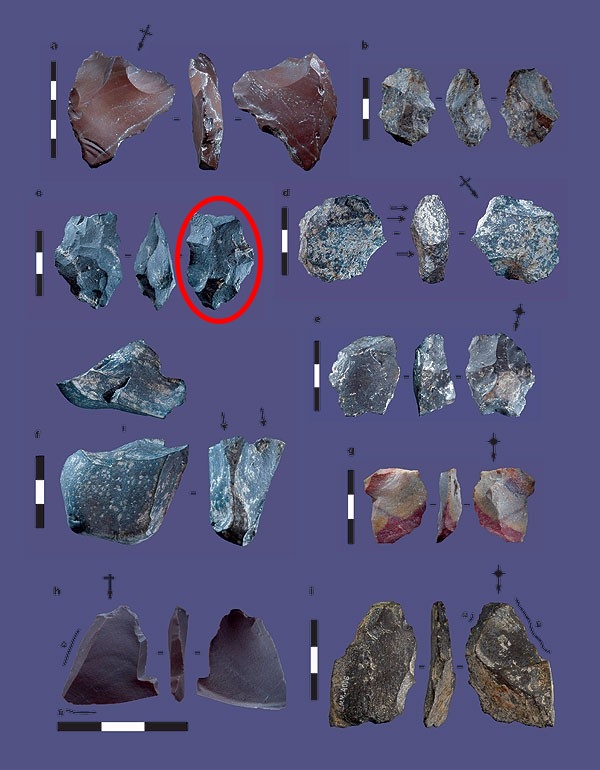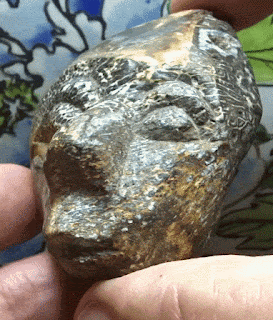All over the world there is folklore of small stature peoples, gnomes, brownies, and leprechauns are just some of the many examples, but is there any evidence that these ever existed?
Indonesia
Many of you would of likely heard of the so called hobbit (Homo floresiensis) bone finds from the Island of Flores in Indonesia. It was approximately 3 1/2 feet tall, but did you know the Island of Flores had folklore of small stature people who lived in caves and kidnapped the villagers children?
But Flores boasts another legendary group, the Ebu Gogo, whose name in one of the languages of Flores means "grandmother who eats everything." The Ebu Gogo are reported to be bipedal creatures around 60" tall who speak their own language and can mimic human speech. Legends about the Ebu Gogo go back to early western exploration of the island by the Portuguese, who heard that the creatures stole food and kidnapped children. Another story holds that the Ebu Gogo were killed by modern humans who arrived on the island from elsewhere in Indonesia -- except for one pair that retreated into the forests, whose descendants still live there.
When the "hobbit" remains were thought to date to as recently as 12,000 years ago, these legends about Ebu Gogo started sounding like they could refer to H. floresiensis. The new Nature paper, however, uses cutting-edge analysis of geology to push the date of disappearance of the "hobbits" back to 50,000 years ago. Or, at least, this is the date that the "hobbits" left the cave at Liang Bua. Research authors Thomas Sutikna and colleagues write that, "Whether H. floresiensis survived after 50 kyr ago -- potentially encountering modern humans on Flores or other hominins dispersing through southeast Asia, such as Denisovans -- is an open question."
Any that know folklore see it as eye witness accounts passed down the generations, this is different to modern day tales in my view, as other factors often sway people to claim such things (money/fame), and likely many witnesses went into making something 'folklore'. With that in mind, and considering the claim that the 'hobbits' disappeared from the island of Flores some 50KYA, how could there possibly be Human eyewitnesses?
According to this article the stone tools in the picture date to between 700KYA and 840KYA, and its assumed belonged to Homo floresiensis (hobbit).
With just a very quick scout over these stone tools I see quite a few possible Palaeolithic symbols, most notably I see a good likeness to a thumb (circled above, the thumb shape is along the right side of the stone with the nail at the bottom.),
The above Palaeolithic stone tool was found in France, this side of it quite clearly shows a whole hand shape reaching downwards as though gripping something. (Thumb to the left, fingers to the right, it even has flesh like coloration.)
The above video is of a fossil mastodon bone carving from the Island of Java in Indonesia. The carved face has some resemblance to classic gnome imagery, with its pointed hat. The item is made of fossilised mastodon bone from the Pliocene period, 5.2 million to 2.5 million years ago. Its Providence is from an old Bristol palaeontological collection. Although believed to be carved when the mastodon bone was already fossilized, examining the object I cannot possibly see how this can be the case, as its as hard as any flint, but does not have the usual signs of knapping that a flint would show.
Despite the obvious face carving the find appears to show other common figuration found in flint tools and figure stones,
India.
These microliths, (small flint tools)are from recent excavations in a cave in India and are dated to 52000 years ago. Just because they are small it does not mean the makers/users of these blade tools were 'hobbits' In fact they are simply ascribed to humans and the cave could have been a creche?,
I've detected traces of possible prehistoric language symbols in these finds also, I call these Eoglyphs. The tool circled in purple top middle in the picture below, shows a common 3/4 face profile, the red circled items is where I have detected thumb/digit/claw/nail symbology as in my chart, and the blue circled items are where I have detected the likely presence of a cloaked figure, of coarse this is not absolute proof, but I repeatedly demonstrate the presence of these shape likenesses in professionally documented prehistoric tool assemblage's as well as my own poly-iconic finds.  source article: https://mumbaimirror.indiatimes.com/mumbai/other/former-ncp-legislator-narendra-patil-joins-shiv-sena/articleshow/68526395.cms
source article: https://mumbaimirror.indiatimes.com/mumbai/other/former-ncp-legislator-narendra-patil-joins-shiv-sena/articleshow/68526395.cms
England.
The largest set of possible evidence for small stature artistic people I believe are the tiny Figure Stones, I call these pygmy rocks, often about an inch in there longest dimensions, These appear intricately carved and show common symbology, convention and topology, exactly the same as the finds documented above and in other places on this blog. These can be found in gravel beds, sometimes with ascribed dates in the tens of millions of years, although I would suggest caution here with these Eoliths, as they are out of any archaeological context, being washed into these gravel deposits. Although its not proof of tiny people carving these items, its a logical assumption that they belonged to tiny people or that they were carved for the children of smaller stature people, calculations based on thumb to forefinger usage would give an estimated height of below 2 feet tall. Pareidolia has not been completely ruled out for such finds, although having repeating topologies and a key of the common symbols goes a long way to discounting such ideas. a large sample size in archaeological context would prove this one way or another.
I would suggest that topology, figuration and features defined by flake removals are often enough to almost certainly give credence to human agency being involved in the creation of such items, some would disagree. For those I suggest that mathematics and probability prove that some items have been modified by humans. Check out the two finds below, also from gravel deposits that are likely in the multi million age range according to popular geology theory.
Topology and topology of features is a powerful tool for recognizing genuine artworks from the chaos of random stones in ancient gravel. If you look at the selection of finds below (foot shapes from my chart) you may notice the possibility of toe, and big toe descriptions in the features of these stones. This could be used as a powerful tool to prove figuration in a random sample of gravel finds. Search the entire selection of random gravel for anything that resembles foot glyph shape, then check for toe features or if the foot arch is on the correct side (same as big toe) if a large enough bias is found it would almost certainly suggest human agency is involved, and not random chance.












